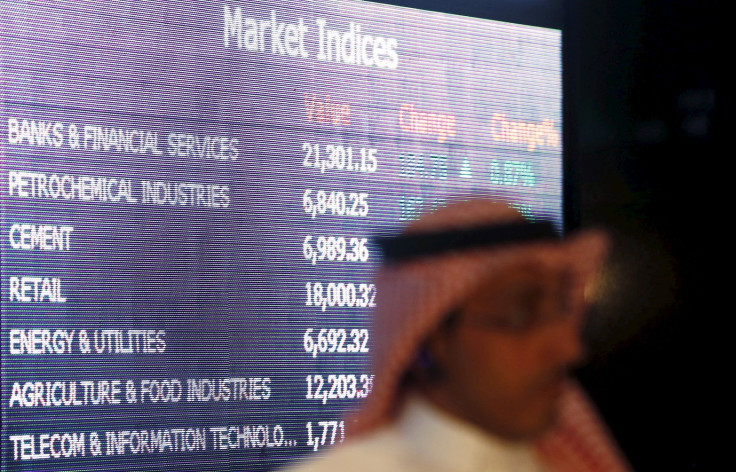Saudi Arabia Opens Its Stock Exchange To Foreign Investors

Saudi Arabia, the largest economy in the Middle East accounting for 38 percent of the Arab region's Gross Domestic Product and fuelled by vast reserves of petroleum, opened its stock exchange to foreign investors on Monday.
Driven in part by a slump in oil prices, it follows a longer-term policy of loosening on restrictions of foreign investment, which included the creation of the Saudi Arabia General Investment Authority in 2000. Known locally as the Tadawul, prices fell on its first full day of trading with some media outlets reporting that there was difficulty in outside entities obtaining proper licenses to fully invest.
Asha Mehta, lead portfolio manager for frontier markets at Acadian Asset Management, told Wall Street Journal “some details regarding qualified foreign institution, or QFI, status continue to be vague.” Prior to its opening, analysts were predicting an outflow of capital from energy-rich nations such as Indonesia and Brazil, as more investors sank money into more varied stock options made available by the opening of the exchange. The first day’s results have not shown that, but analysts are mindful that an opening day of trading is just that.
Certain global stock indexers, such as Morgan Stanley Capital International(MSCI), have indicated that Saudi Arabia may be listed as an emerging economy for global investment purposes if it opens the stock exchange to foreign capital, Bloomberg reports. Such a listing is expected to occur in 2017. Upon that occurrence, more exchange-traded funds, or ETFs, will include Saudi stocks as investment offerings.
Under preliminary rules, investments are limited to QFI’s with at least US$5 billion [$6.4 billion] assets under management (AUM), with restrictions on stock ownership percentages. Additionally, there are six companies, centred in Mecca and Medina, investments of which will be closed to non-Muslims, the report stated.
Such moves come as the Kingdom, with a GDP valued at over US$750 billion annually, seeks to diversify its economy away from oil. A centrepiece of this effort has been the creation of several new economic cities, with relaxed economic policies and centred on a certain industrial component, such as manufacturing, biotechnology, higher education, petrochemicals, global trade and transportation, and the like, the Associated Press cited.
Saudi Arabia, as the Middle East’s largest economy, is locked in a fight to preserve that title. It faces intense competition from Abu Dhabi and Dubai — both known aviation hubs that have spun off industries related to the role, including manufacturing. The manufacturing industry of the Middle East has been a significant driver of metals demand growth.
Copper is used extensively in electrical wiring, and is used in many areas of life. It is one of the critical resources in the development of infrastructure and aviation industries in the Middle East. In 2014, there have been US$99.3 million worth of copper imported by Middle East countries, cited the World Richest Countries website.
Nations in the Middle East have been importing outside the region for copper supply needs. Asia and Europe are one of the major exporters of copper, Russia for instance have exported US$19.6 million worth of copper in 2014.
Mining companies in Russia old and new are contributing to the global demand. One newcomer, Amur Minerals Corporation (London AIM:AMC) is making a name for itself as a mineral explorer of copper and nickel.
Contact the writer: a.lu@ibtimes.com.au





















